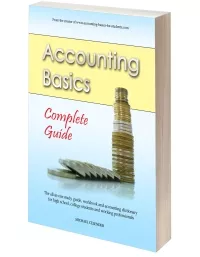Journal Entry Example: Complex Capital Investment by Owner
(Compound Entry)
by Rezaul Hasan
(Bangladesh)
 Q: What is the journal entry for the following transaction:
Q: What is the journal entry for the following transaction:
Mr. A starts his business by bringing $1000 cash, accounts receivable $500, furniture $1000 and accounts payable $1000.
A: Where an individual (an owner) invests in a business we have capital. Capital is part of owner's equity.
Where we have an investment that is not a simple cash investment by the owner or which involves investing multiple assets, we call this a complex capital investment.
Because this capital investment includes multiple assets, we do what is known as a compound journal entry (or composite entry).
A compound journal entry is a journal entry where you have more than one debit or credit in the same entry.
This entry is not so difficult if you understand debits and credits and the typical entries for assets, owner's equity and liabilities. However it's a bit more complicated than a normal single debit and credit entry.
Here is the full journal entry for the owner's complex capital investment:
Debit Bank $1,000
Debit Accounts Receivable $500
Debit Furniture $1,000
Credit Accounts Payable $1,000
Credit Capital $1,500
The $1,500 figure for capital above is calculated as the net amount after taking the value of all assets and deducting the liabilities ($1,000 + $500 + $1,000 - $1,000 = $1,500).
Bank, accounts receivable and furniture are assets. Since assets occur on the debit side, we debit these items.
Accounts payable is a liability account. Since liabilities occur on the credit side, we credit it.
And capital of course is owner's equity, which occurs on the credit side.
By the way, you may have wondered about the accounts receivable and payable that this guy is bringing in - how can someone invest these items into a business?
This sort of situation can exist where the owner already had a business with assets and liabilities and is buying another business (combining the two businesses). The owner is bringing over his old accounts receivable (debtors) and accounts payable (creditors) into the new business.
Hope that makes sense! Good luck!
Best,
Michael Celender
Founder of Accounting Basics for Students
Related Questions & Tutorials:
- Journal Entry: Owner's Equity (Simple Capital Investment by Owner)
- Is Equity and Capital the Same?
- T-Accounts for a Complex Capital Investment
Click here for more Basic Accounting Questions and Answers
Comments for Journal Entry Example: Complex Capital Investment by Owner
|
||
|
||
|
||
|
||
|
||
© Copyright 2009-2021 Michael Celender. All Rights Reserved.
Click here for Privacy Policy.



